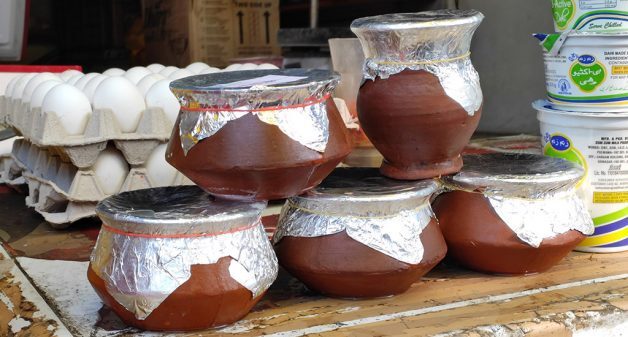Every morning in the mist-covered Kashmir village of Ladhu, Ghulam Mohammad Lone lugs two large cans from one house to another.
The middle-aged villager buys the surplus milk from cattle farmers in and around his village. He makes a living by turning the extra milk into paneer or cottage cheese.
He is one of hundreds of Kashmiris who recently started making value-added dairy products in the valley thanks to the growing demand for organic, homemade dairy products.
Paneer, or cottage cheese, is a tasty, healthy protein – being a rich source of calcium and phosphorous – and is found in many north Indian dishes. But increasingly more people want locally-made paneer. The same with dahi, or curd, which is sold in earthenware pots when it is made fresh, adding an extra flavour that many people prefer.
Fresh cottage cheese demand spurs cottage industry
This growing demand, coupled with surplus yield, means many cattle farmers – who once relied on selling unprocessed milk – are finding extra income from making other dairy products.
About 30 kilometres from Lone’s home, 45-year-old Abdul Ahad Bhat pushes his bicycle, loaded with cans of milk, through the narrow lanes of suburban Srinagar. While he buys the milk in the evenings, he spends the mornings selling zamdud, or curd, at the market.
“My wife and daughter spend hours boiling the milk. Then they pour it in earthen pots,” said Bhat. After adding a drop of ferment, the pots are left overnight for the curd to set.

Five years ago, Lone used to sell unprocessed milk in the market. But with surging milk production, the competition increased. On top of that, the shopkeepers began to stock processed, branded milk and one day they suddenly stopped buying milk from him.
It was another shopkeeper who came to Lone’s aid. He asked Lone to supply a few kilograms of curd. “That’s how I switched to making and selling curd. There’s a good demand for curd,” said Lone.
He sells about 100 units of curd-filled pots of one kg and half-a-kg every day. He also supplies to roadside eateries near Shalimar Mughal Garden, a popular tourist spot.
Fayaz Ahmad, one of the customers, said that he loved to have curd in an earthen pot, because of the taste, besides it being natural and organic.
Economic value in value addition
Not too far from Shalimar, Mohmmad Aslam Khatana, a middle-aged man from Dara village, has taken to making and selling ghee. This remote village in Srinagar has a lot of livestock, supplying milk to urban areas every day. Seeing the surplus supply of milk, like many others, Khatana started making ghee.
“Of the total production of 70 lakh litres of milk per day, Kashmir produces 40 lakh litres and Jammu produces 30 lakh litres,” said Purnima Mittal, Director of Animal Husbandry Department, Kashmir.

In Odina village, Shakeela and her husband Mohammad Jaffar Bhat, run a successful business of making cottage cheese, locally called chaman. “Earlier, when we sold milk as it is, our livelihood was a struggle,” she recalled.
Within two years of starting, the Jaffar family now produces about 300 kilograms of cheese and paneer every day from the surplus milk collected from cattle-rearing households in nearby villages.
Like Shakeela, there are many dairy farmers who are finding the value addition to milk, and producing a variety of dairy products bring more money.
Abdul Ahad Bhat earns 25% more income after he switched to selling curd.
Increasing demand for homemade products
According to Navin Choudhary, the principal secretary of the state’s Animal, Sheep Husbandry & Fisheries Department, this trend of villagers selling value-added milk products started nearly four years ago.

The demand for nature-based homemade products has increased due to rising health consciousness.
“Locally made paneer is tastier and doesn’t have any sour taste,” said Zoona Begum from Srinagar.
Ghee-maker Khatana said a large number of his customers prefer homemade dairy products.
“I usually sell my entire stock of homemade curd and butter within an hour in the morning,” he said. He finds an increase in demand, as there is a dearth of ghee and butter in the market.
“The contribution of the dairy sector to the national economy is invaluable. This sector helps in many ways, like providing the draught power to agriculture (animals pulling agricultural equipment), organic manure and cash income from dairy products on a regular basis,” said Choudhary.
Nasir Yousufi is a journalist based in Srinagar.








